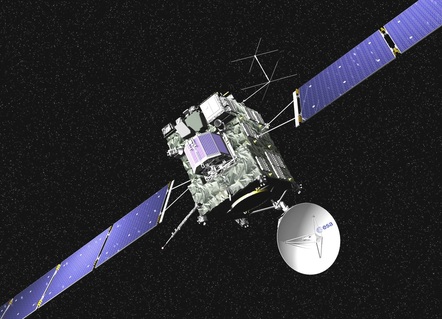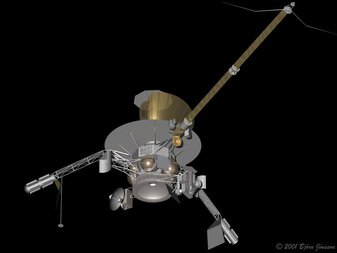 Image taken of Earth during Rosetta's third Earth gravity-assist manoeuvre.
Image taken of Earth during Rosetta's third Earth gravity-assist manoeuvre. https://www.britishmuseum.org/explore/highlights/highlight_objects/aes/t/the_rosetta_stone.aspx), so the Rosetta space mission aims to probe the history of the Solar System by analysing one of its oldest remnants – a
comet.
As we said in Part 1 of this preview, the Rosetta spacecraft was launched on 2 March 2004 atop a European Ariane 5 launch vehicle. This was the first step in Rosetta’s epic odyssey to rendezvous with Comet 67P/Churnyumov-Gerasimenko in August 2014. At the time I remember thinking, impatiently,“that’s 10 years in interplanetary space”, and that many of the people that work on the programme (and me) will be retired by the time we get to the pay-off! However, despite this there was a lot of excitement about what Rosetta would discover once up close and personal with the comet. But there was also an air of concern that some technical issue may occur onboard the spacecraft in the intervening 10 years that would deprive us all of the scientific revelation that would result from a successful mission.
 Rosetta image of Steins taken September 2008
Rosetta image of Steins taken September 2008 spacecraft appears to be in good health – at least there is no indication from ESA that there is anything amiss technically with the spacecraft. I guess that if there are technical issues which the operators believe they can work around, then it’s unlikely that the Agency or the spacecraft manufacturer (EADS Astrium) are going to be telling us about them at this stage. So we can only assume that all is well with the mission, and we can look forward to a feast of astronautical history-making over the next few months.
After launch in 2004, the interplanetary trajectory was a complex series of gravity assist swing-by manoeuvres, three of Earth (March 2005, Nov 2007 and Nov 2009) and one of Mars (Feb 2007). Using this technique, the spacecraft was able to acquire sufficient energy to reach the comet without having to expend excess onboard
propellant. How this works is explained in some detail on pages 71 to 78 of the book How Spacecraft Fly, but very briefly the spacecraft executes a fly-by of the target planet. This must be performed by flying‘behind’ the planet, with respect to the planet’s forward motion, and the direction of the outgoing trajectory of the spacecraft must be roughly aligned with the planet’s path along its orbit around the Sun. Done in this way, the fly-by allows the spacecraft to steal a little of the planet’s momentum, which boosts the spacecraft's speed relative to the Sun. See the accompanying beautiful image of the Earth, taken by Rosetta during its third Earth gravity assist manoeuvres in November 2009.
 Rosetta image taken during the Lutetia encounter in July 2010
Rosetta image taken during the Lutetia encounter in July 2010 Lutetia – see accompanying pictures. The Steins encounter occurred on 5 Sept 2008, with Rosetta approaching within 800 km range at a fairly low relative speed of 8.6 km/sec. As can be seen, Steins is an irregularly shaped object.
It is also quite a small object with a maximum dimension of around 5 km. The second asteroid encounter (Lutetia) occurred on 10 July 2010. Lutetia is a significantly larger object, compared to Steins, being about 100 km across. This time Rosetta passed by at a minimum range of about 3,170 km with a relative speed of 15 km/sec, resulting in images of this irregularly-shaped asteroid with a maximum resolution of approximately 60 m/pixel.
Watch out for the next episode of this Rosetta mission preview when we’ll take a look at the ‘deep-space hibernation’ phase of the mission – a bold and risky operation, and another ‘first’ for the Rosetta programme and the European Space Agency.





 RSS Feed
RSS Feed
